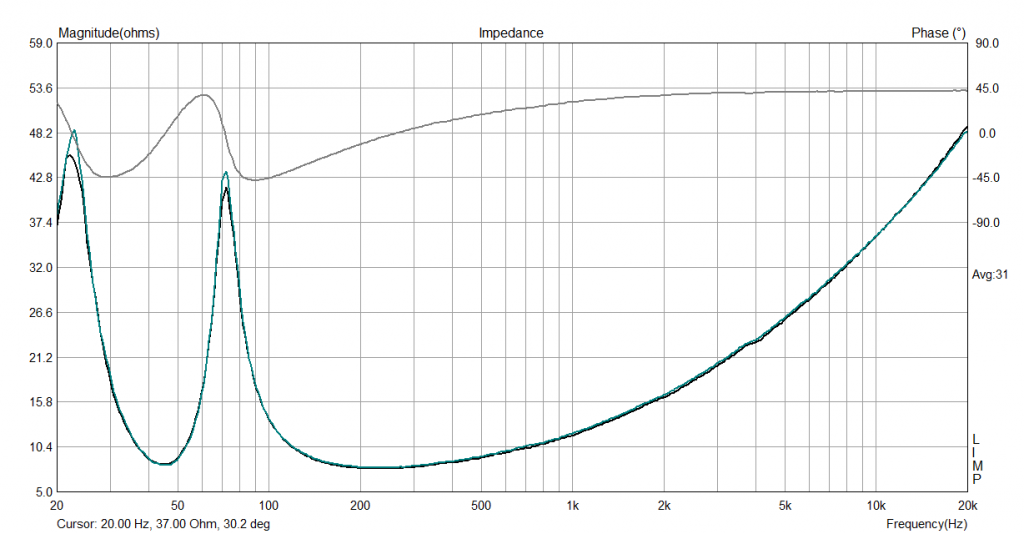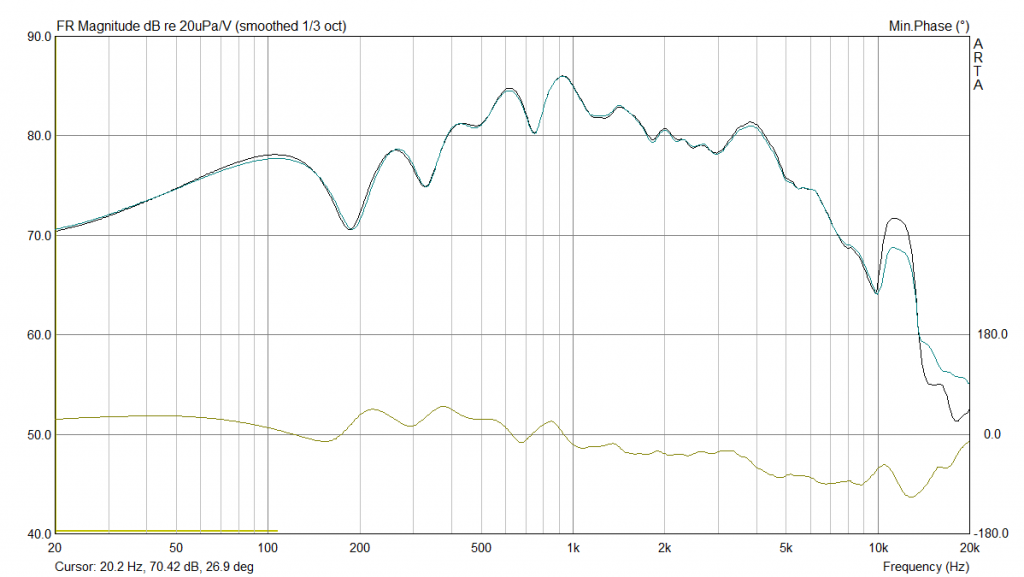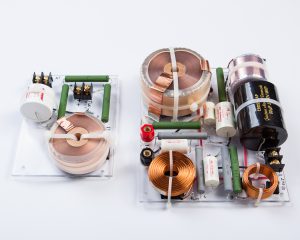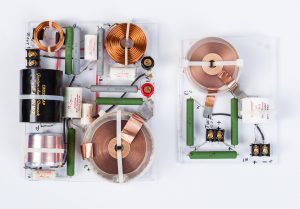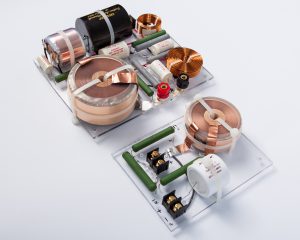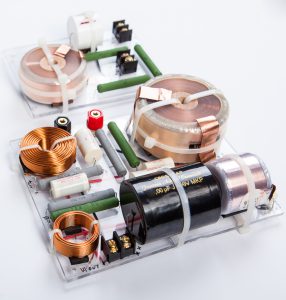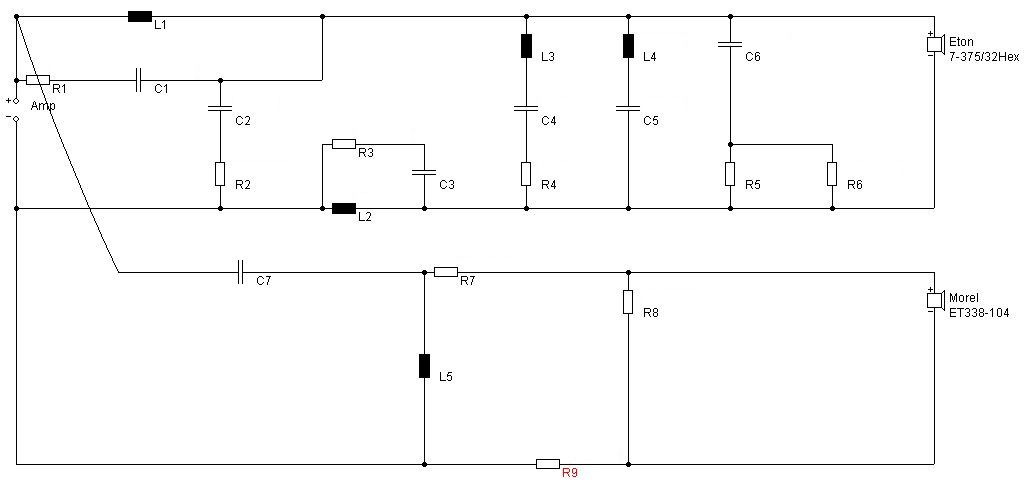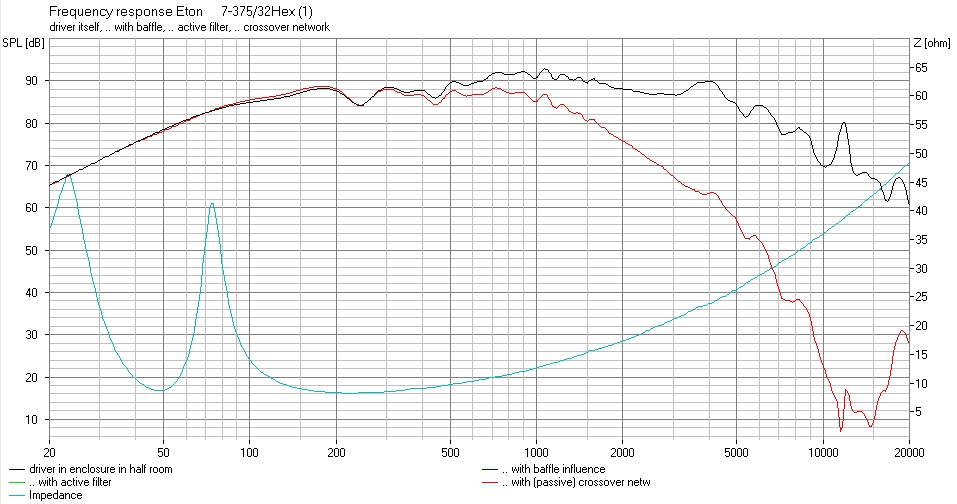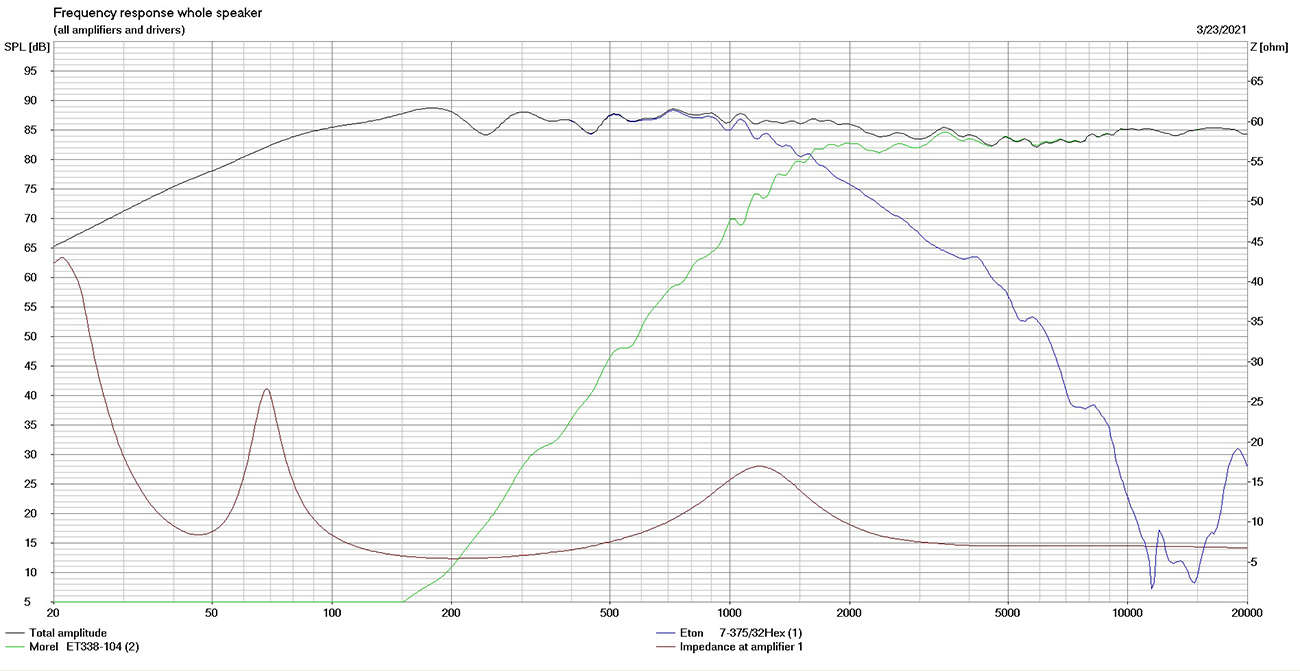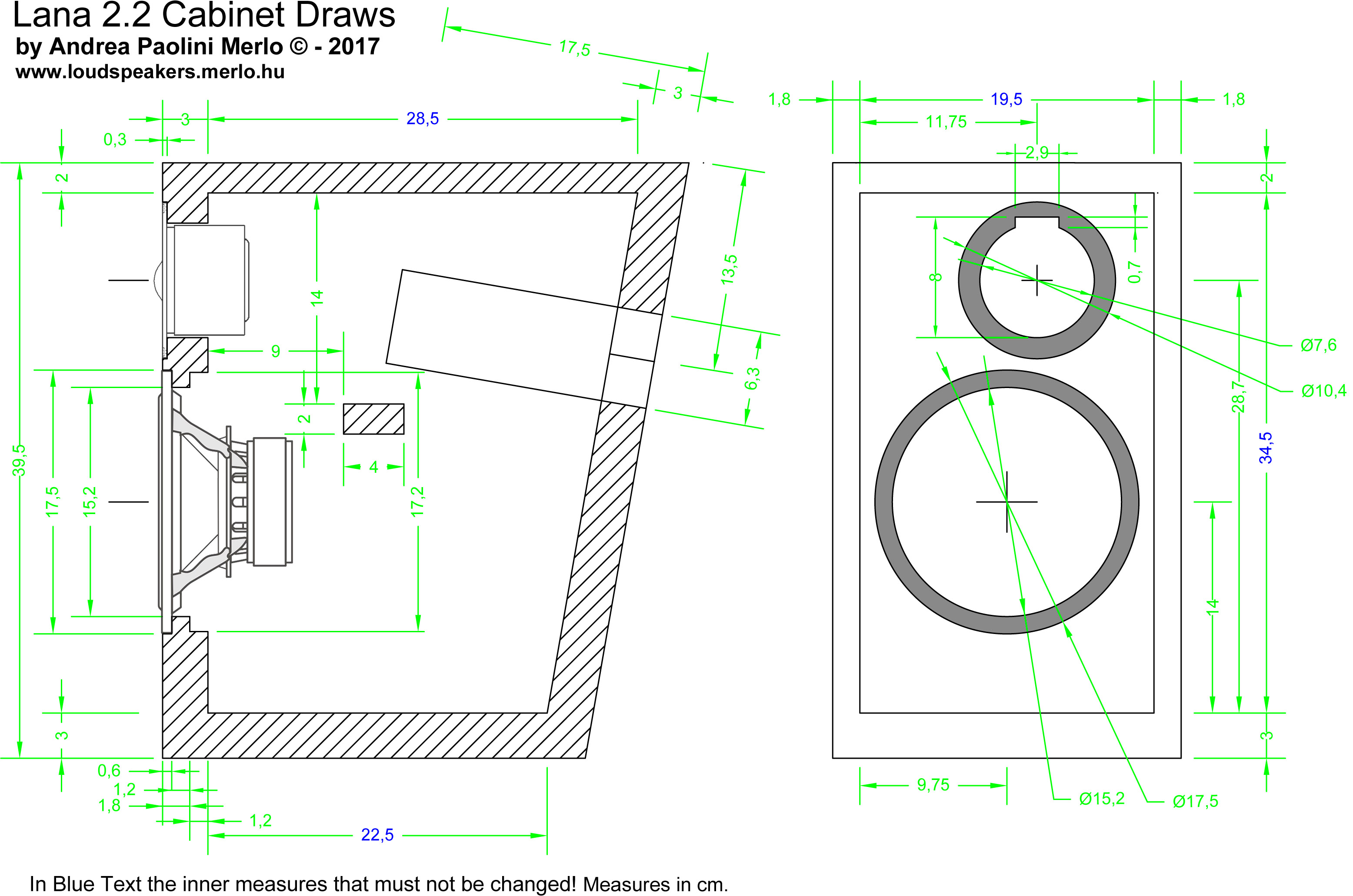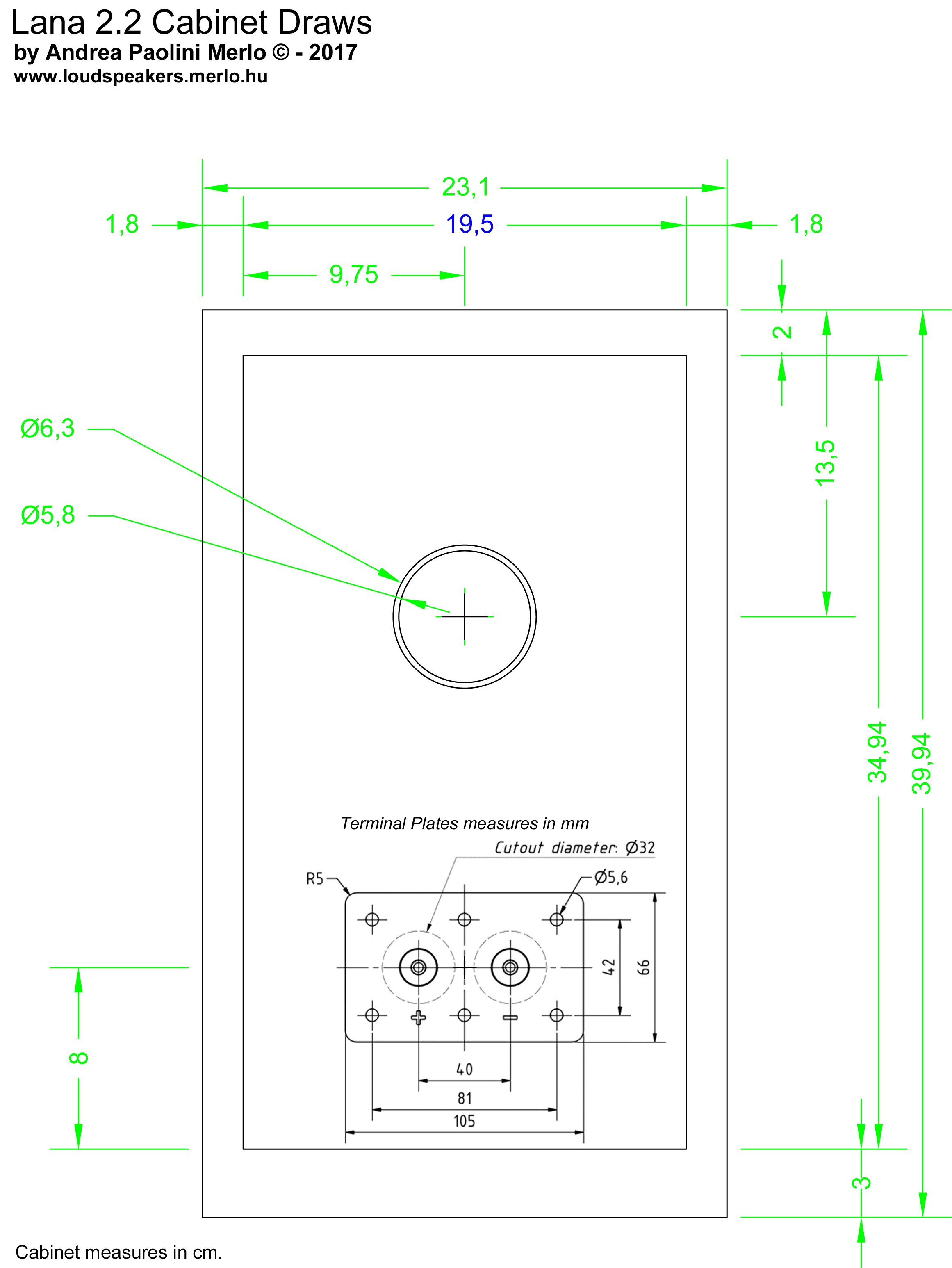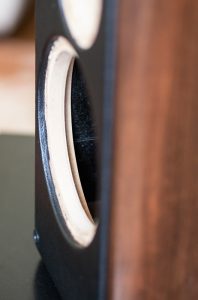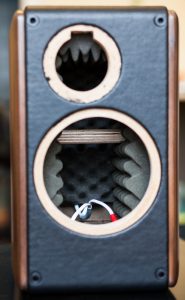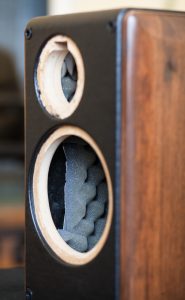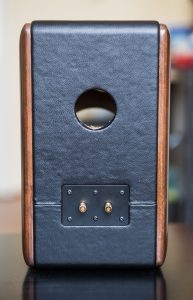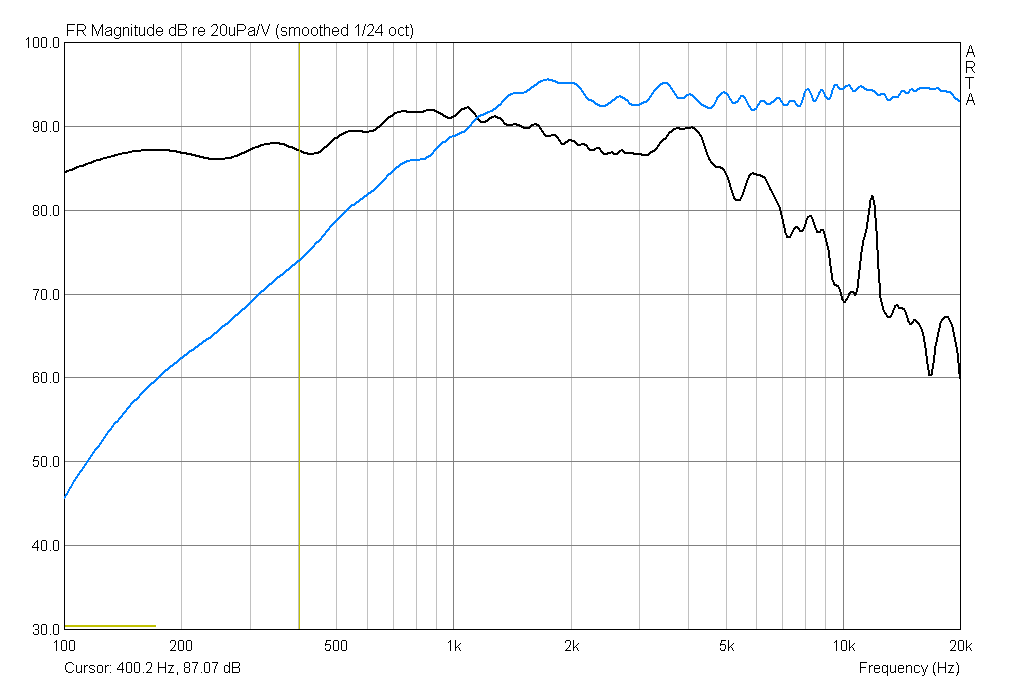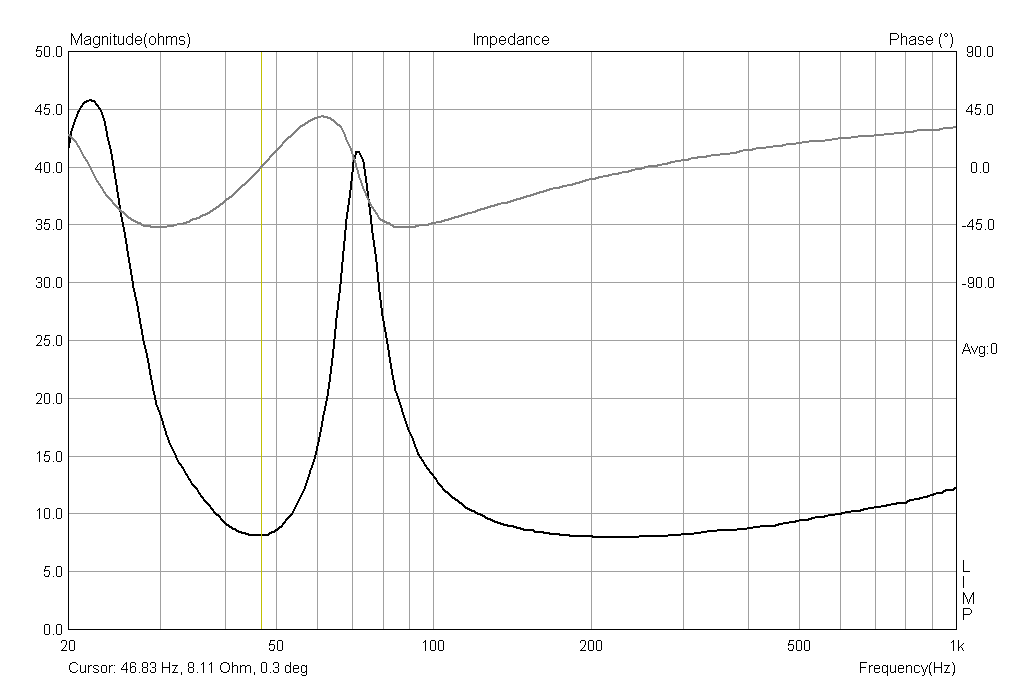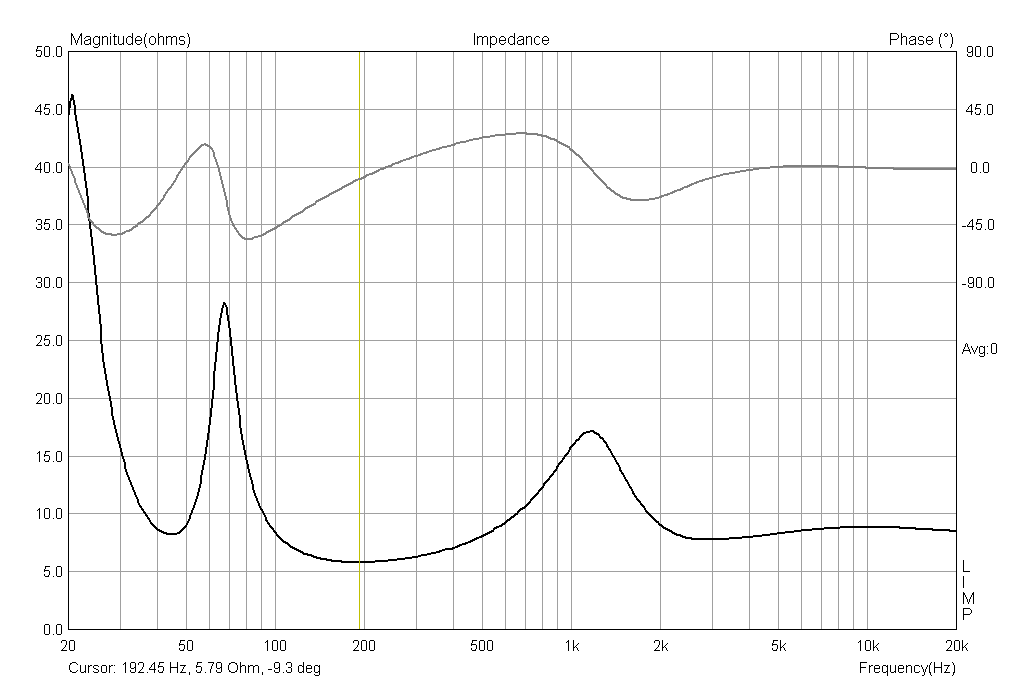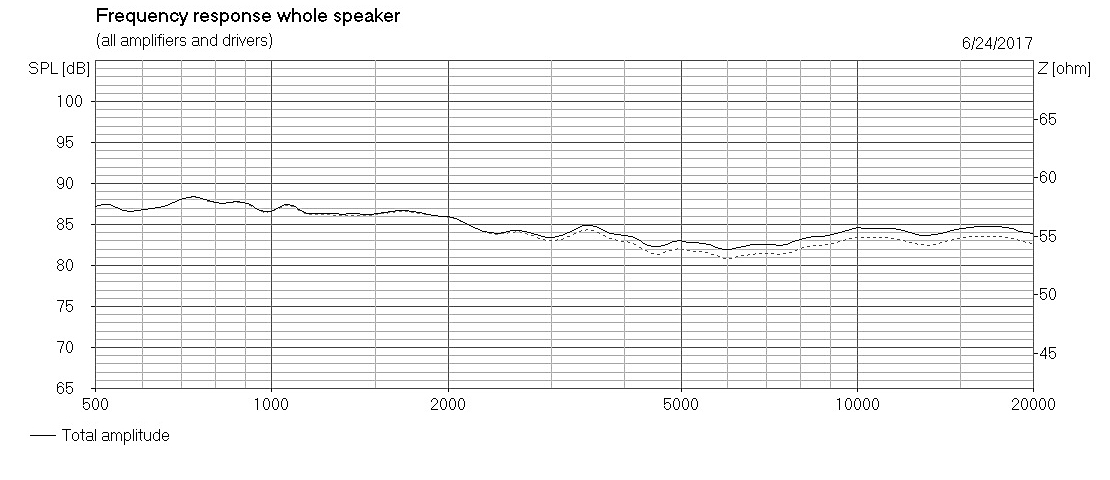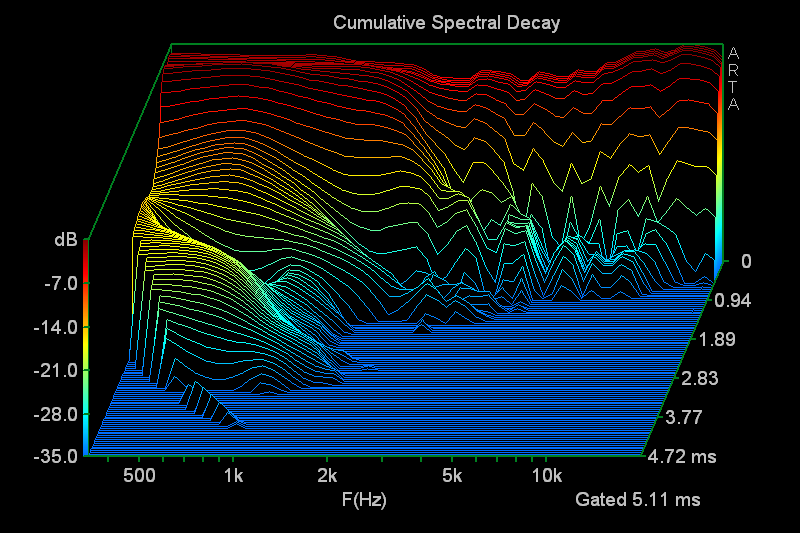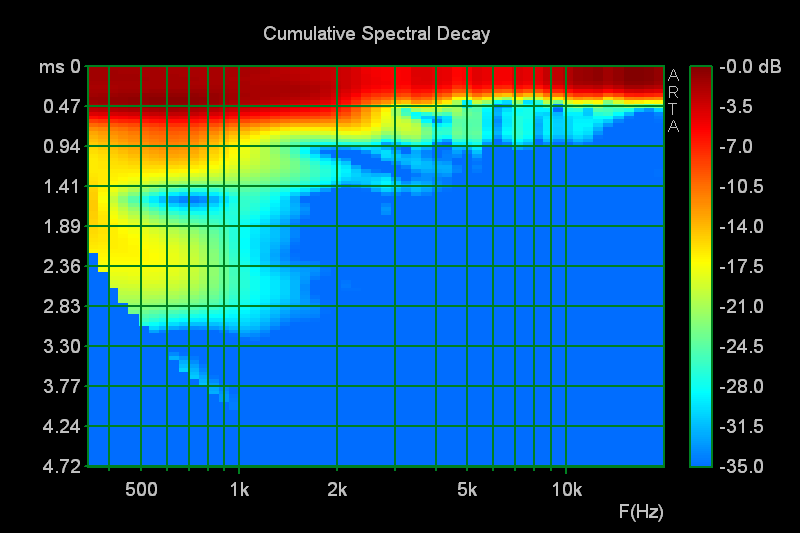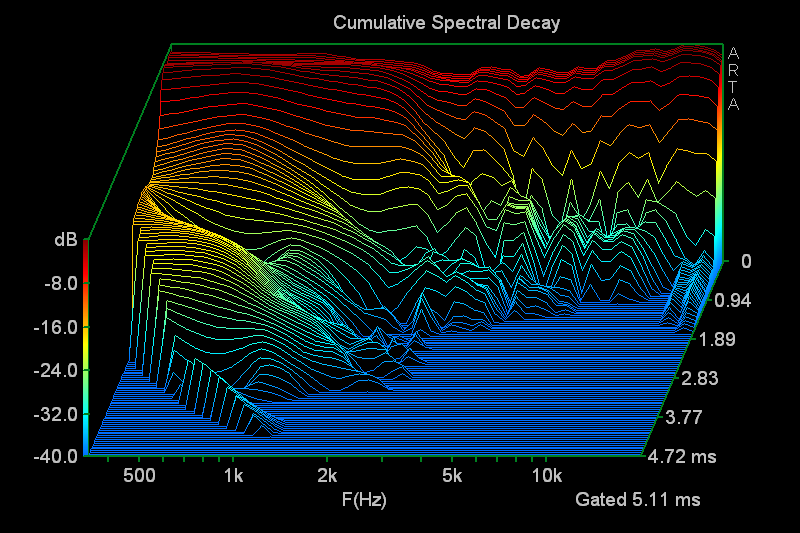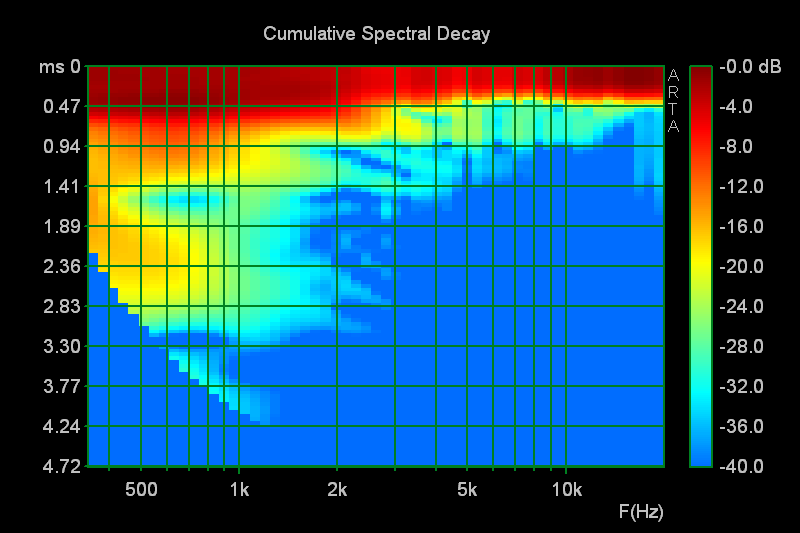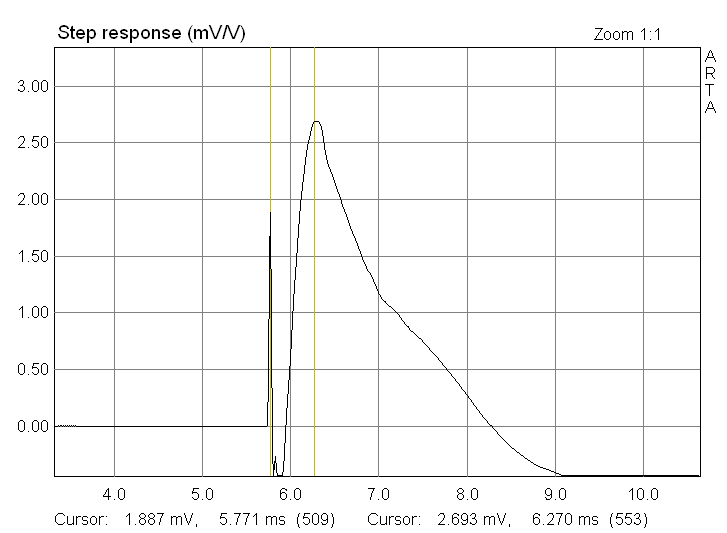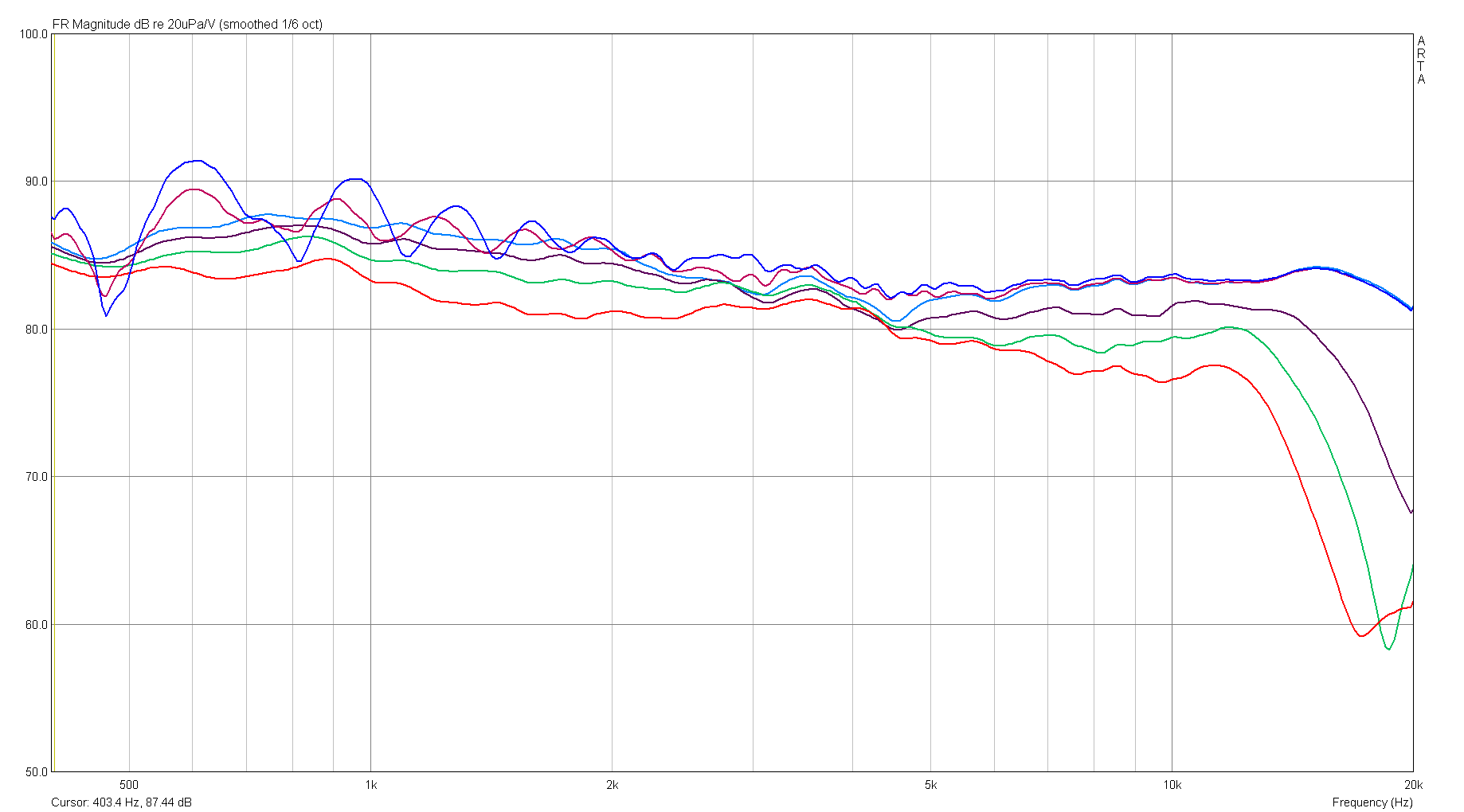Project and Photos by Andrea Paolini Merlo © – Cabinetmaker: Tibor Szeifert
LANA 2.2
2 way stand-mount Loudspeaker
(It is also a small study on few acoustic matters)
After a long time of stop I finally decided to work on a new loudspeaker system and to get more familiar with the latest acoustic measurement systems and especially to take in serious consideration the interactions between the loudspeaker system and the domestic room environment and how this effects the sound.
In June 2013 I started the Lana 2.2, a 2 way stand-mount speaker with a 7-inch woofer in 14,5 liters box, and I finalized the project at the beginning of 2017, it took a bit too much time because I took the chance to make several general technical and listening testing and to do my best to keep learning. The 2 way stand-mount sized speakers of around this size and with a 7-inch driver are still one of my favorite kind of speaker system, they really can be the all you need in rooms of 10 to 30 m2, a very good compromise between size, costs and performance and also of nice look in a domestic environment. Moreover the box of a stand-mount speaker it is more “affordable” to make for a DIY enthusiast.
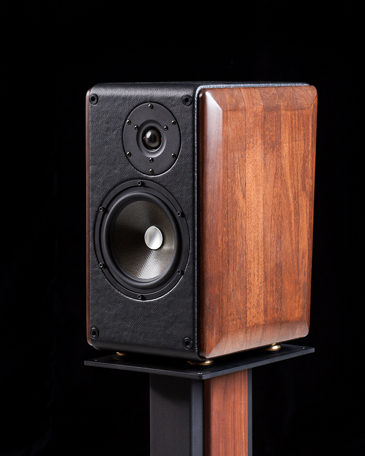
LANA 2.2 – DIY Loudspeaker – Click to enlarge
Basics Characteristics:
- 2-way vented speaker system, 7″ mid-bass and 1,1″ hand coated soft dome
- 14,5 net liters vented cabinet (virtually ~16 liters) – Weight: 17 Kg for each cabinet!
- System sensitivity: ~86.5 db/2.8v, 1 meter
- Frequency response: 47 – 20.000 Hz (-3db) – Typical in-room response ~40 Hz (-3db)
- Acoustic point of crossover: ~1600 Hz – Electric point of crossover: 2000 Hz
- Impedance: 8 ohms, minimum 5.5 ohms at 200 Hz
- Suggested power: 25-130 watts rms
THE DRIVERS
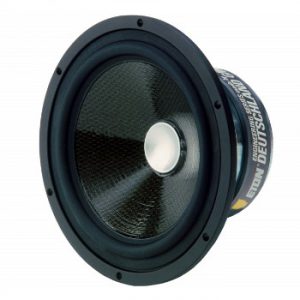
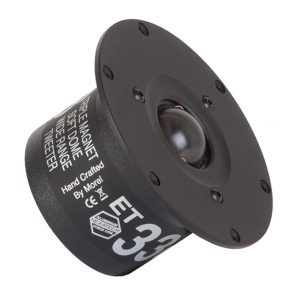
The drivers are the woofer Eton 7-375/32 Hex (from the Symphony I series) and the tweeter Morel ET 338-104. Is a long time that I wanted to use Eton drivers and the quality of construction and sound went far over my expectation, everything is very well designed and take in consideration all different aspects to reach a great balanced result. The reproduction is very transparent, clear and dynamic and not least has an authentic spatial representation, a joy to listen to. You may think: “well a ± 4mm linear excursion is a bit poor”, well is not like this at all! The dynamics, precision and clarity in the low range is more then superb and the reproduction stays very controlled and of quality even at highest levels, listening to records like the Telarc The Rite Of Spring (Cond. Yoel Levi) in my 17 m2 listening room is simply impressive and you don’t miss “anything” (you are welcome to come to me and listen). But don’t forget to position the speakers and your listening position in the room carefully to achieve a good acoustic result (and with some room acoustic treatments)! Be aware that a 7-inch woofer with ± 6/7mm linear excursion have a great capability to move more air but may have a bit less dynamics and precision, usually they also have a slightly lower sensitivity, of course all depends on what you want to get and both solutions are good but I see too many posts around that determinate the high linear excursion as The Main thing. 🙂 It is a very important thing to keep a good balance between all the different aspects to achieve a good overall results in a driver or in a loudspeaker system construction, and the Eton 7-375/32 Hex has a great balance between its different parameters. The 2 Eton woofers DON’T come as matched pairs but the measurements results of the 2 units (frequency response mounted in the final enclosure) are like 2 twins, amazing, this prove a very high standard construction and seriousness. The only thing is that with the crossover you have to take care of the break-ups peaks over 3000 Hz which makes the crossover more complicated and a bit more expensive. These break-ups are there also at the off-axis response and, depending at which angle, also at different frequencies, so I really needed to take care of them.
About the Morel ET 338-104 I think already all is being sad, it’s a very well known and loved Tweeter. Is a detailed, very fast and natural sounded 28mm soft dome tweeter with very good low distortion. It has a ferro fluid cooled large Hexatech aluminum voice coil that gives an exceptional power handling (200w nominal power and 1000w transient power 10ms). This, for my way of thinking, is an important aspect and not because I am listening at very high levels power but because the driver will be working, most of the time, far from its limits, and this is important to reduce compression and distortion. As I like a “warmer” and not “tiring” kind of sound for me this tweeter has to be controlled so to don’t have it too “present” in the higher frequency range, also because this Morel has a very good dispersion and therefore there will be more “coming back” interactions from the walls of the listening room. Is very important to take in careful consideration the response of the drivers at 15, 30 45 and 60 degree to have a better vision of what we will have when the loudspeaker system will be working in a domestic environment. Going back to the tweeter, I noticed that in the last years the production of this drivers got even more consistence and the TS declared parameters are now more near to what we get in reality, and also the packaging got better and better in the last years. They are matched pairs and so the response between the 2 drivers is very close to each others. I try few positions for this Tweeter on the baffles to minimize the diffraction problems and the Morel was always performing very well! Sure the Morel team took very much attention to this problem and probably the front plate shape with the small waveguide makes the difference! The ET 338 was always a beloved tweeter to me and it will always be.
Drivers Specifications sheets Download: Eton 7-375/32 Hex Morel ET 338-104
Eton woofers are not matched pairs! Look at this impedance and frequency response comparison between the 2 units of the Eton 7-375/32 Hex mounted in the box with no crossover, 2 beautiful twins! This shows how the standard qualities of the Eton production is extremely high! Click to enlarge. (Please note that here the frequency response measures were taken only for comparison purposes! In a small room that cause the response to be quite uneven.)
THE CROSSOVER
Photos of the “final” crossover – Click to enlarge
(Generally speaking: To give a try I deliberately made first a crossover to get a quite straight response on-axis, and the sound results were not that good, the sound was too aggressive and harsh in the middle high range and not very natural to me, it was very detailed but a tiring sound is not what I look for and so I started to change it. At the end, after several measuring and listening, I got to this “final” crossover that I believe is suitable to have a good sound, a correct stage reproduction and good general characteristics in a domestic environment. The off-axis measurements of the response and of the phase (of drivers alone and together) at 30, 45, 60 deg. (horizontal) and at 15 deg. (vertical) helped a lot and sad a lot to what we should take care of. It is not all about to get a straight line in the on-axis response.
Consider also that every driver has its own “soul” (sound), every cone/dome materials will color the sound in a different way! You may have 2 different tweeters with very similar TS parameters, distortions, frequency and phase response and still you will have a different sound from them, and you will need to cross them, with the same kind of woofer, in a different way, as they will surely soundly interact with the woofer in a different way (of course also the use of different crossovers solutions will give us different sound results). Is not all about what you see on the graphics but is mainly about what you hear. Can a frequency response measure show us the differences in sound quality between a cheap crossover component and a high quality one? No! But you will hear differences, and don’t forget that the perception of sound is subjective! In now days, with the help of the computers, is “quite easy” to make a flat response on-axis but still is not easy at all to make a good sounding speaker system. Is not correct to judge a speaker system watching only at its graphics, they can help us and they are very important (accurate measures are a must to make good loudspeaker systems) but at the end what matter is what you will hear in your listening domestic room. Please also read Measurements by T. Gravesen).
Sound is Art and Science, it is not just a question of personal taste. By knowledge and experience we will be able to evaluate which are those speakers systems that are better then the others and that sound well and correctly. On these results we all should quite agree and then between these good speakers we will choose the one that better suites our “way/taste of listening”, depending also on our room, electronics, kind of music…
The crossover scheme:
If possible I try to keep the crossover scheme “simple”, to have less components before the drivers and also to avoid the increase of the costs, but I am also for more complicated crossover when this is needed to reach certain results, no one of these 2 approaches is better then the other in my opinion, all depends on what you have and on what you want to get and how. One of my favorite sound is the British sound and usually their crossovers (BBC projects, Kef, Spendor, B&W, Harbeth …) are far from simple and the sound they get is wonderful. In the Lana 2.2 I made the tweeter filter simple and the woofer one not. 🙂
Crossover short description:
- Usually I use to put components in series to the drivers in both positive and negative poles, I personally did not test if the musical results are better in this way then in the “normal” connection way (that is when all components in series to the drivers are on 1 of the 2 poles) but experienced experts did these tests that proved some small improvements in sound resolution. So why not to use this kind of configuration?! It can just make better. Note that to use this type of solution is reasonable only if you use high quality components or you will never hear any differences.
- Tweeter has a crossover cell that reaches a 21 db/octave acoustic slope and an L-pad resistor circuit to attenuate the driver level (R7 + R9 is the real value of the resistor in series of the Tweeter, see previous explanation). R9 (and also R7 and R8) can work as a fine tune element to reach a sound more near to your taste or to better interact with your domestic room characteristics. R7, R8 and R9 are 10 watt Superes resistors.
- Woofer has 2 main peaks in the frequency response, at around 3800 Hz and at 12000 Hz, on-axis and also off-axis. Actually on the off-axis response we will have also some other peaks at different frequencies then 3800 Hz and 12000 Hz. I really wanted to get rid of them so I use 2 series RLC elements in parallel to the driver to flat them (one of the RLC circuit had so low resistor value that finally I decided to remove the resistor). Then there is a RC to counteract the rising impedance of the woofer, and I use it a bit “freely” to better shape the frequency response of the Eton, the R5 and R6 are 10 Watt MOX resistors connected in parallel to reach a 20 Watt value and there fore to avoid any possible “over heating” (and possible distortions) under extreme using conditions. Always better to keep the components far from their limits.
- Because of those peaks in the frequency response I did try to use an electrical 24 db/octave filter to reach a very steep slope but using this configuration the acoustic phase response between Tweeter and Woofer was going badly far from each others, so I went back to the electrical 18 db/octave configuration dampen by the R2 resistor in series to the capacitor (R2 is also used to fine tune the acoustic phase response between the 2 drivers). But the off-axis response of the Eton over the 3800 Hz was still quite dominant in my opinion (after several listening sessions in a partially acoustically treated domestic room and also listening with only the Woofer connected to the crossover) and I wanted to attenuate those frequencies more, that is why I use a kind of “resonant cells” around the 2 coils of the filter (L1 and L2 Air Copper Foil coils), the result is a 16 db/octave acoustic slope from the point of crossover (~1600 Hz) up to 4000 Hz and a 25 db/octave acoustic slope over 4000 Hz. With these solutions the acoustic phase between the 2 drivers is very well aligned from ~300 Hz to ~4000 Hz.
- Acoustic point of crossover for the Morel ET-338-104 at ~1600 Hz?! Yes and the Morel will never be under real pressure, believe me. This driver can handle an incredible power and moreover in this project is quite attenuated. The Electric point of crossover is at 2000 Hz.
LEFT: Simulated Frequency Response of Eton 7-375/32Hex mounted on the final baffle without (black) and with crossover (red) + Impedance (without crossover). RIGHT: Simulated Response of individual drivers on baffle with crossover and summed Response + Impedance. The Simulated Frequency Response is extremely close to the measured Fr. Response. Please note that, because of the room “reflections”, the frequency response in the graphics is realistic above 300 Hz! Here the measures used for the simulation were not “shortly Gated”. But you can see in the “The Measurements” of the final speaker (where the measures were taken with a shorter gated window to avoid the most of the room reflections) that the reduction at 250 Hz is not there anymore. Click to enlarge
THE CABINET (Cabinetmaker: Tibor Szeifert)
Cabinet Draws – Click to enlarge
–
Please note the following info about the Cabinet, for any further info just contact me (andreapmerlo@gmail.com):
- all the panels are internally covered with 4mm tick high damping bitumen board for reducing structure-borne noise of loudspeaker cabinets. Suggested: 4mm Bitumex (Bitumex at Lautsprechershop) or 3.6mm Vibrodamping (Vibrodamping at Rumoh Shop). The Panel of the drivers is not covered with the bitumen boards.
- The 2 sides panels are of 1.8cm hard Walnut wood, (if you want you can have them ticker, just keep the cabinet inside measures), all the others are MDF panels (or you can use HDF or Baltic birch): bottom and back panels are 3 cm tick, the upper one is just 2 cm tick (to get the Tweeter as near as possible to the edge of the cabinet). The front panel is also 3 cm tick and is made of 2 panels glued together, the “external” one is 1.8 cm tick and the “internal” is 1.2 cm tick. I made it this way to make easier the cut out for the woofer whic is made in the following way: the “external” panel has the correct cut out of 152mm diameter, and the “internal” panel has a bigger hole of 172mm diameter. This is important so not to restrict the rear air-flow of the driver and to reduce rear diffraction.
- Please ROUND all the edges of the cabinet to minimize the diffraction effects caused by the edges of the cabinet.
- The 4 MDF panels (front, up, back and bottom panels) are externally covered with black synthetic leather (you can use also real leather, of course).
- In the past I was use to close the back of the cut out of the Tweeter to “reduce” possible “vibrations” given by the internal air flow of the other drivers but now I think this is not necessary. What is very necessary is to have the front panel as stiff as possible as all the main “vibrations” of the drivers are transmitted to each others through this front baffle.
- Polyurethane Egg Crate Foam is applied on all the internal panels except for the bottom panel where is located the crossover of the woofer (of course no Foam on the panel with the drivers!). I personally used a foam of 5cm thickness and you may prefer to use a ~4.2cm thickness foam, in this case just make same tests. (Consider that the “quantity” of an Egg Crate Foam of 5cm thickness is similar to a normal shaped Foam of ~3cm thickness)
On the left you can see the wider circular cut behind the woofer cut and the 4mm black bitumen on the side panel. On the 3rd photo from left you can see the Polyurethane foam being cut to give more free space behind the Woofer as the side panels (with plus the 4mm bitumen board on) are very close to the driver.
THE MEASUREMENTS
Before you start reading the measures please check the above section entitled Generally speaking or read Measurements!
LEFT: Measured drivers Gated (Windowed) Frequency Response mounted on the final baffle without crossover. RIGHT: Measured Impedance of woofer mounted on the reflex tuned box and without crossover. The Fb (tuning frequency) is at ~46.5 Hz with 8.1 Ohm and 0 deg of phase. Click to enlarge
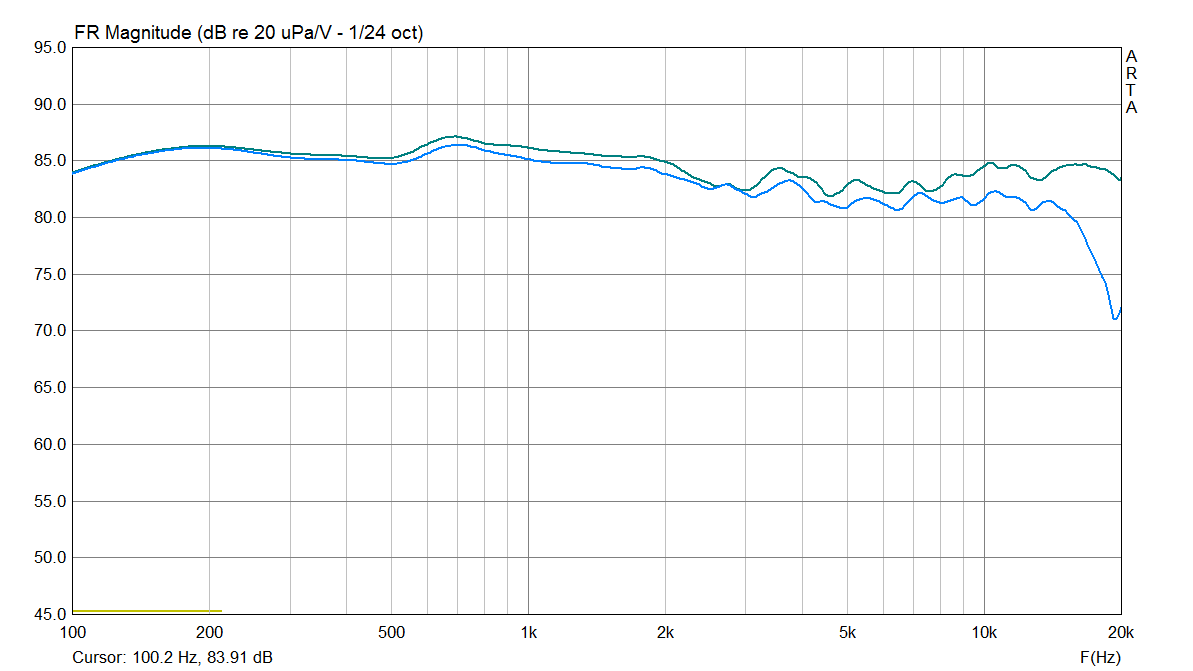
Final speaker Gated Measured Response at 80cm distance with microphone between Tweeter and Woofer (smoothed 1/24 oct), (green) 0 – (sky blue) 30 Degree. The 30 Degree response gives a better idea on how the Speaker will perform in a domestic listening room. The input is normalized for 2.8V/1 meter. This measure is with my preferred tweeter fine tuning, as you can see the tweeter is a bit attenuated but I choose it because this gives a good “musical and warm” but still very detailed general response in a domestic room. It was tested in rooms of 13 and 20 m2, with this kind of sized Speaker you can go up to ~40m2 rooms with no problems. Click to enlarge
LEFT: Final system impedance plot with impedance magnitude and phase measured response. Minimum impedance is 5.8 ohms at192Hz, maximum phase rotation (angle) is of -56deg at 81Hz and 14Ohm. So Lana 2.2 is not a problem for any well-designed amplifier! RIGHT: The tick line is the simulation of a fine tuning with a higher SPL (+1.2db) from 2900Hz and up. Changing just 1 or 2 resistors we can adjust and fine tune the Speaker to better meet our needs. Click to enlarge
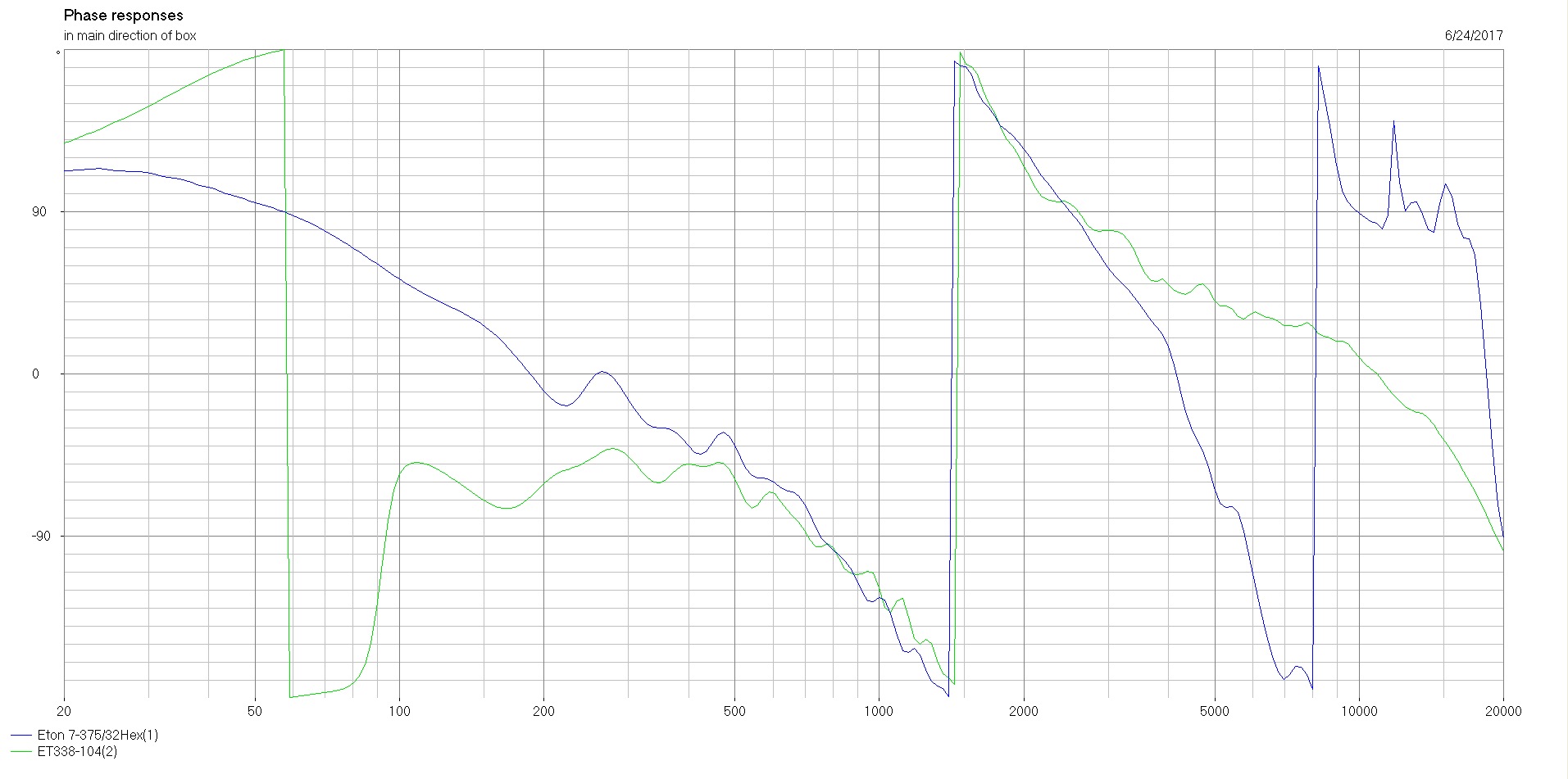 Phase Responses of the Eton 7-375/32Hex and of the Morel ET 338-104 with final crossover, good phase integration in all the crossing region between Tweeter and Woofer. I also examined the Phase Response at horizontal dispersion of 30, 45 and 60 deg and the Phase Response differences between the 2 drivers is slightly growing going from 0 to 60 deg. I asked some Explanations and Opinions on this matter to Mr. Gian Piero Matarazzo that with professionalism and great experience answered me in the “readers’ mail” section of the Audio Review magazine (“Fase Acustica“, issue 371, page8/9, is good to read it!). Click to enlarge
Phase Responses of the Eton 7-375/32Hex and of the Morel ET 338-104 with final crossover, good phase integration in all the crossing region between Tweeter and Woofer. I also examined the Phase Response at horizontal dispersion of 30, 45 and 60 deg and the Phase Response differences between the 2 drivers is slightly growing going from 0 to 60 deg. I asked some Explanations and Opinions on this matter to Mr. Gian Piero Matarazzo that with professionalism and great experience answered me in the “readers’ mail” section of the Audio Review magazine (“Fase Acustica“, issue 371, page8/9, is good to read it!). Click to enlarge
LEFT: Cumulative Spectral Decay Waterfall of final speaker set to -35db and no Smoothed. RIGHT: Cumulative Spectral Decay Sonogram of final speaker set to -35db and no Smoothed. Click to enlarge
LEFT: Cumulative Spectral Decay Waterfall of final speaker set to -40db and no Smoothed. RIGHT: Cumulative Spectral Decay Sonogram of final speaker set to -40db and no Smoothed. We can see that in the Decay there is a “slowing down” around the 750Hz and a “coming back” reflection around this frequency. Also there is a later reflection of lower level at around 1000Hz that ends at ~3.60 ms and later comes back at a very low entity. From the Sonogram we can practically say that from ~1500Hz to 20000Hz the Lana 2.2 gets to -40db in about 1.55, just some very week resonances come back at 1500-2500Hz and are definitely down to -40dB at 3.15 ms. From 4500Hz up the Decay is extremely fast. Click to enlarge
LEFT: Step Response, we can see that Tweeter and Woofer unit are connected with positive acoustic polarity, the Woofer is coming 0,50 ms later then the Tweeter. We can also see a smooth crossing from the tweeter to the woofer at around 6.1 ms. Some thoughts about time-coherent and “less” time-coherent loudspeaker system here. Click to enlarge RIGHT: Gated Measured Response differences between right and left speaker! (mic at 1m on Tweeter axes).
Notes and thoughts:
“Your impression of the sound quality of a loudspeaker in a room is based on a combination of the direct, early and late reflected sounds produced by the loudspeaker” – (Dr. S. Olive)
Dome tweeters (specially with no waveguide, with waveguides is another story!🙂) have a better dispersion then woofers, starting usually from around 1200/1800 Hz (of course depends also on the size of the woofer and of the dome of the Tweeter) and The Morel ET 338-104 has a very good dispersion (is a wide directivity speaker). Also every driver behaves differently on-axis then on off-axis (15, 30, 45, 60, etc degrees). These factors, in a normal domestic room and even if the room is partially acoustically treated, will bring to some “rising response” in those frequencies where the reflections (mainly early and also late reflections) are coming back from the room walls, floor, sealing and furniture in a greater amount, that’s why is important to take in consideration also the off axis responses of the drivers when building a loudspeaker system. To look at Lana 2.2 directivity I use to take several Windowed Freq. Measures at different off axis angles but there are also other ways to do it. A very interesting one is the Harman approach and its concept of Loudspeaker Power Response (or Sound Power) that can help on better predict how a loudspeaker will sound in a domestic environment (Power Response is the sum of the total radiated acoustic output of a loudspeaker as measured in a sphere around the speaker at several incremental intervals on- and off-axis in the far (reverberant) field. – taken from the interesting article of Gene DellaSalla: Loudspeaker Power Response). Please also read this short but well explained article: “Speaker Directivity/Off Axis Response: Theory And Measurement Techniques” by Nyal Mellor. For the Italian speaking there is also a very interesting article on the Costruire Hi-Hi N.207 entitled “Altoparlanti: Perché la risposta fuori asse é cosí importante“, as far as I know there is not a digital version that I can link.
We (normal human being) have the disadvantage to don’t have an anechoic chamber (but at least we have the possibility to use Windowed measures to get close to anechoic frequency response measurements) but we have the advantage to have domestic rooms 🙂 and we all listen our Hi-Fi equipement in domestic rooms! That is why I use to take several freq. res. measurements with longer gate times and in few typical loudspeaker/microphone placements (for example baffle at 70/120cm from side wall, 60/100 cm from back wall, microphone at 1/2m distance etc. etc.) in 2 of my domestic rooms to try to better predict what I will get in a domestic listening environment. The 2 rooms have different dimensions and 1 of them has an acoustic treatment (also because in this room there are very few furniture). From the measures results I can say that in this specific project we will have mainly a “SPL rising” from ~2200 to ~4500/5500 Hz, of which intensity? Well, good question! It depends on where the listening position and the speakers are located, how big is the room and how far are the boundaries from the speakers, furniture location, how much the listening environment is absorbing, reflecting and diffusing sound… but in any case, and even if we have few good acoustic panels located in the right place, we will still have some rising in those frequencies region. See following measurements:
- From down the first 4 Measured Responses are taken with a short Gate time, with microphone at 1m and at Tweeter high showing horizontal dispersion (measured at the side of the box where the tweeter is more fare from the panel edge, as this is the side that will be next to the side wall), the cabinet (tweeter) is positioned at 148cm from floor, 260cm from side walls, ~180cm from back wall, 235cm from ceiling: (sky blue) 0, (violet) 30, (green) 45, (red) 60
- The other 2 Measured Responses are not Windowed (Gated) and with microphone at 1m on Tweeter axis in a 21m2 domestic room, the cabinet (tweeter) is positioned at 102cm from floor (on a usual sized metal stand for stand-mount speakers), 90cm from side wall, 110cm from back wall, ~280cm from ceiling:
– (red violet) with 5cm tick Polyurethane foam panels on parquet floor (just between cabinet and mic.) and with back and side wall entirely covered with heavy velvet curtain
– (blue) with 5cm tick Polyurethane foam panels on parquet floor (just between cabinet and mic.), with back wall entirely covered with heavy velvet curtain and with side wall uncovered (side wall is of bricks with thick plaster)
As we can see the 2 not Gated Measured Responses show (more or less) how the room can interact with the Frequency Response of the speaker and how the level of the Freq. Response start to gradually increase over the point of crossover where the Tweeter has a wider directivity then the Woofer, over 2kHz is clearly visible and it goes till almost 6500Hz.
- In the (red violet) situation the SPL increases compared to the on-axis Gated Response from ~2kHz to 5kHz and also very little between 6 and 7 kHz: 2300Hz +0.70db, 2600Hz +0.70db, 3000Hz +1.25db, 3500Hz +0.65db, 4000Hz +0.55db, 4500Hz +1.70db, 5000Hz +0.65db, 6650Hz +0.30db, 8000Hz +0.10db
- In the (blue) situation the SPL increases compared to the on-axis Gated Response from ~2kHz to 6.5kHz and little between 6.5 and 8.5 kHz: 2300Hz +0.83db, 2600Hz +1.35db, 3000Hz +2.55db, 3500Hz +0.60db, 4000Hz +1.37db, 4500Hz +1.73db, 5000Hz +1.05db, 6650Hz +0.55db, 8000Hz +0.42db
All this is surely simplistic but is able to give an idea of the interactions between off-axis Responses and the room boundaries, and even if you have the room treated with acoustic panels or with general absorbing/diffusing surfaces (curtains, carpets, sofas, bookshelves…by the way: bookshelves are one of the best acoustic treatments “item” you can have in your room!) you will still have to deal with the off-axis responses. And don’t forget that the Acoustic Treatment in the room has to be done slightly and cleverly, without exaggerating. An acoustically dead room (totally or high absorption of sound) is the worst you can have. It’s important to know that reflections are not necessarily bad. There is a lot of research (like at Floyd Toole’s Sound Reproduction book) that shows people like lateral reflections, as they increase perceived soundstage width and envelopment.
LANA 2.2 KIT
To know all crossover values, list of components and information about the crossover assembling please contact me (andreapmerlo@gmail.com). As there is a lot of work behind this project and I am sponsored by nobody please note that to get these information and to assist you I ask a fee of 150€, I am sure you’ll understand. Please note that the Eton 7-375/32 Hex is, unfortunately, quite difficult to find but not impossible, if you can get one you will NOT be disappointed! Is still available on the Eton official web-site under the Symphony 1 series.
Few informative photos:

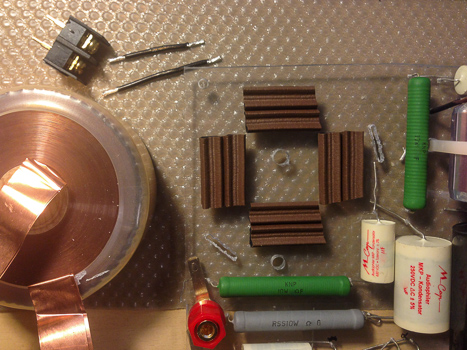
LEFT: Disposition of the Woofer (bottom) and Tweeter (back panel) crossover. To put these 2 good-sized crossover inside the cabinet need quite a lot of patience and attention, the space is not much. 🙂 Under each crossover there is a 4mm tick felt material to reduce vibrations coming from the cabinet. RIGHT: Under each coil and bigger sized capacitors I put a rubber material to reduce vibrations, these components are tightened to the base using Nylon self locking cable ties. Also silicone glue or, even better, strong elastic construction adhesive (SuperFix-Bostic) are very good to fix the crossover components to the base (but if later you need to change any component then it will be not an easy task). I try to connect all the components of the crossover directly, without using extra cables, and when needed I use the Jantzen Silver Plated Copper Wire Speaker Cable to connect the components, you can see it up left in the photo next to the gold plated Circuit board terminal.
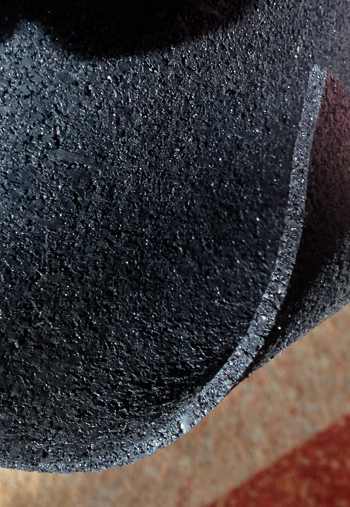
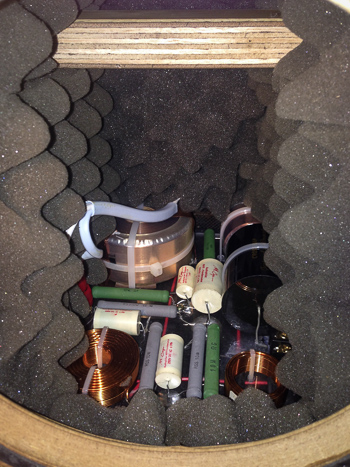
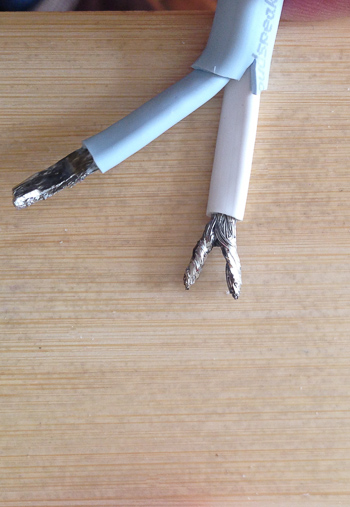
LEFT: Instead of the 4mm felt is possible to use a ~2mm tick rubber material to reduce the vibrations, probably works better then the felt but I prefer the “natural” material. CENTER: The Tweeter crossover is behind the Polyurethane foam. In the final assembling I added a small piece of Polyurethane between the Supra cable and the Copper Foil coil to avoid any possible vibration between the 2 elements. RIGHT: For the inner cabling I used the Supra Ply 3.4 cable and to connect the Supra to the gold plated terminal block I did not use gold plated fork terminals, instead I made a kind of fork soldering the cable end in the way you see in the photo. For all soldering I use the High quality silver/gold solder by Mundorf or the Jantzen Audio Solder tin 4%Silver Pb free. The best thing to do for all the inner cabling connections (between drivers, binding posts and crossover) is to solder them, but as I am always ready to change or test something (and always can happen something) I did not do so… and is also fine this way, on the drivers I use gold plated Push-on Terminals. For the internal cabling I chose the Supra PLY 3.4 because is a very good and neutral cable, but a “normal” High Quality OFC cable speaker is also fine.
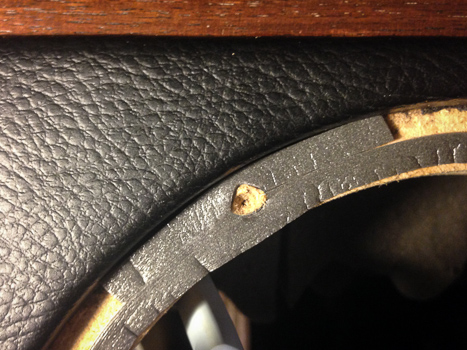

LEFT: The screw of the woofer goes through all the front panel, I prefer to go for sure to seal as much as possible. I use a very thin (5mm) Foam strip, as is important that the Woofer is really in tight contact with the front panel. Instead for the Tweeter I use a rubber strip to try to isolate the driver from the vibration of the cabinet, click here to see what I use. RIGHT: During some early “crazy” tests.
SOUND
The tests of frequency response were made in 2 different rooms (one of 17m2 and the other of 22m2) and with the speaker and microphone located in different positions, the listening section is made mainly in my listening room of 17m2: speakers are 125cm from each others (not far enough but that is what I have), 75cm from side wall, 122cm from back wall, listen position is at around 180-200 cm from speakers. I am not use to hear music at the “perfect” equilateral listening position, is not what I look for as I prefer to have more “ambient” interaction.
As I am the one that made the Lana 2.2 speakers I feel a bit strange that I am the one speaking about how they sound (I am sure you also feel a bit this way!), I try to be objective but obviously I make them to fit my “subjective” way of hearing, so I don’t go deep into this topic. The Eton 7-375/32 Hex gives a very fast, controlled and still deep response in the low end and with very good dynamic results, from 200Hz up we can get around the 110 db. With good records you will hear the clear hit on the drum and its vibrations, the double-bass is there, reproduced with the correct “structure” and, in some records, a bit “warmer” then usually. In fact the low region has “a bit rounded” bass response and this was my choice for this project, still, thanks to the speed of the Eton woofer, you will not really loose the quality and precision of the bass region. In case, it’s enough to lengthen the reflex length and you can get it tighter. As we go to the middle/bass and middle frequencies we get a great transparency and clarity showing the very good sound properties of the 3-layer Hexacone Sandwich cone (these are one of those things that NO any measures of frequency response, distortion, etc. is able to show you). Then comes in the Morel ET 338-104 tweeter that proves to be an excellent partner to the Eton, extremely fast, articulated and natural. The sound of the Lana 2.2 is kind of “warm”, not tiring and still detailed, the horizontal sound stage is well represented and wide, reaching past the outer boundaries of the speakers. Also the depth is good. The piano is a pleasure to listen to and wind instruments have “thickness”, showing a great alive presence, you really feel they are there in front of you, hearing all their “vibrations”. Male voices are convincing and tending toward a slightly warm timbre, female voices needed a lot of attention to get them right (with several crossovers testing) and at the end I am happy with the results, their beautiful timbre and nature, and their strength, will reach you deep inside and this is the most I need. The Classic music and the big orchestra is well reproduced with good neutrality, the instruments are well located in the space and the sound is convincing. The Lana 2.2 stays controlled and focused even with those more impressive and demanding orchestra compositions and it will keep you bound to your seat! 🙂 With an overall dynamic and transients that are very good for a speaker of this size (thanks to these great drivers!). I also like very much different kinds of Pop music and I did listened to several artists which are also strongly part of my youth, well what to say… I am really involved, the equipment and the room just disappears and the music is all it counts. The Lana 2.2, given the “well present” and accurate nature of the ET 338-104, is best matched to systems that have strong musicality and of warmth nature…
By Andrea Paolini Merlo ©

